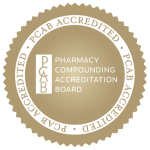One of the most common reasons dogs are in a veterinary office is for pruritus. Itching makes up over 40% of all visits for canine skin conditions. Atopic dermatitis is among the main causes for pruritus.
Bella is a 17 month old Labrador Retriever that comes to your office for the first time. Her owner, a 42 year old professional male, that recently moved to the neighborhood, tells you that Bella started itching about three weeks ago and it’s getting so bad that he cannot sleep well at night because of Bella’s constant scratching. The owner reports that Bella has no other known medical conditions and was seen by the veterinarian for needed vaccinations and flea control before moving.
On a thorough medical examination, you find erythematous patches on the flexural surfaces of the front legs, axillae and abdomen. At this stage, there does not appear to be any infectious complications, but Bella seems to be somewhat anxious.
After reviewing the completed comprehensive questionnaire, you decide to run a few lab tests in order to determine the diagnosis. You determine that Bella has atopic dermatitis probably caused by (new) environmental allergens.
Now it’s the time to create the treatment plan.
- Client education is the first major step. It starts in the veterinary office and continues at the pharmacy where the client gets counseling on the medication. AD is a lifelong condition with no cure, so the treatment will consist of lifelong management and regular follow ups with the veterinarian. Education will include recognition of potential flare factors to prevent exacerbation of pruritus, what medication is prescribed and why, what to watch for with regards to potential side effects, etc. A well-educated client will be a key member of the treatment team assuring compliance with the treatment regimen.
- Non-pharmacologic treatment step – avoiding the allergens – if identified. This is a difficult step, if not impossible, when allergens are not identified.
- Medicated shampoos to maintain the fur coat hygiene and reduce pruritus. Shampoos that contain ceramides and certain antibiotics will help in preserving skin integrity as a barrier to reduce water loss.
- Pharmacologic treatment – it is usually carefully selected based on each vet patient’s unique situation. In our case, Bella will start the pharmacologic treatment with antihistamine drugs to help her with the pruritus and her anxiety. A personalized therapeutic approach is of critical value in achieving the expected clinical outcome. Within this approach, veterinary compounding is at the core.
- Bella will benefit from a topical compounded medication containing an antihistamine incorporated in a specially designed base for veterinary use. Here is an example:
Diphenhydramine HCl 2%/Tranilast 1% Topical Gel (ZoSil™)
Formulation discussion: in this formulation, both diphenhydramine and tranilast are well-known active pharmaceutical ingredients used as antiallergic drugs in canine atopic dermatitis.
ZoSil is a new base, specifically designed for animal skin to be used in veterinary compounding. It is a silicone hydrogel base designed to topically deliver active pharmaceutical ingredients (APIs) to animal skin, ideally for dermatitis and wound care. Its Smart Diffusion Technology™ possesses a unique fatty-acid releasing mechanism to provide moisturization and help improve the appearance of red, flaky and irritated skin. Its natural ingredients include conditioners to promote healthy, shiny fur without matting or gumming.
This compounded topical antihistamine medication will help reduce the itching while moisturizing Bella’s skin and maintaining its integrity. This medication is prescribed for fast relief of pruritic symptoms as the onset of action of the API’s is rapid.
- Immunotherapy remains the gold standard for AD treatment. Cyclosporine is the drug of choice for canine AD. It is commercially available in a variety of strengths, usually in capsule dosage forms. As it is a maintenance therapy, it will be given long-term to Bella. Because it needs to be taken 2 hours before or after meals, it may be challenging for her owner to administer it. If the commercial form is not a viable option, Bella may prefer to have Cyclosporine prepared as a chew treat or an oral solution with her favorite flavor – peanut butter. The strength will be calculated precisely based on Bella’s weight. This may help tremendously with the compliance.
Bella will come back to the office for follow up and Cyclosporine dosage adjustment after one month. Communication between the veterinarian, the client and the veterinary compounding pharmacist is crucial for the success of the treatment.
Case discussion: despite the fact that atopic dermatitis is a fairly common canine skin condition and there are multiple pharmacologic treatment options available commercially, Bella is a unique vet patient with a unique therapeutic need. Taking into consideration the owner’s participation in the treatment team and Bella’s preferences in making it easy to comply with medication administration – compounded medications offer the most appropriate solution for an improved clinical outcome.
To learn about how you can offer personalized treatment solutions for all your veterinary patients, select and contact a reliable veterinary compounding pharmacy. Make HALDEY Pharmaceutical Compounding your trusted resource for professional advice and quality services for your practice. Talk to one of HALDEY’s experienced compounding pharmacists about your practice’s compounding needs.




